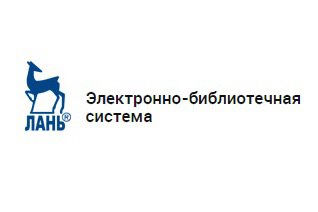| УДК 504.55.054:622(470.6) | DOI: 10.21440/0536-1028-2020-7-73-82 | Download |
The research aims to work out in details the measures taken to limit ecological risks when producing ore in highland regions.
Research methodology includes applying the methods of X-ray fluorescence spectrometry, neutron activation analysis, and mass spectrometry to study the mechanism and indicators of environmental ecosystems chemical pollution with the products of synergetic interaction among the ingredients in metallic minerals.
Research results and scope. The data on the role of water in mining have been introduced. The features of mining industrial wastes impact in the conditions of the Caucasus highland. The leading role played by metallic ore mill tailings in chemical pollution of highlands has been numerically proved by the example of the major fields. The idea has been formulated that highland territories are weakened and public health is deteriorated due to chemical contamination of highland environment by mining waste. Quantitative parameters of mining and smelting impact on public health have been determined, and the prospects of measures taken to protect population from the negative impact of mining have been forecasted. It has been shown that overall protection of environment from chemical pollution is possible only in case of advanced recycling of waste. Advanced methods of trade effluent reclamation have been recommended. Research results may be applied at the underground development of metallic ore deposits.
Summary. In the conditions of highlands, ecosystems contamination with the products of synergetic interaction among the ingredients of metallic materials in the process of metal production increases. Environmental protection from chemical contamination with liquid products of mining is possible by extracting chemically dangerous metallic ingredients and reducing their concentration down to the level of hygienic standards with the use of new natural and resource saving technologies.
Key words: mining; trade effluent; ecology; mill tailings; ecosystem; public health.
REFERENCES
1. Golik V. I., Ermolenko A. A., Lazovskii V. F. Business problems of applying natural resources of the Southern Federal District. Krasnodar; 2008. (In Russ.)
2. Golik V. I. et al. Theory and practice of ore production and processing. Vladikavkaz; 1997. (In Russ.)
3. Muller N. Z., Mendelsohn R., Nordhaus W. Environmental Accounting for pollution in the United States economy. American Economic Review. 2011; 101(5): 1649–1675.
4. Ghorbani Y., Franzidis J.-P., Petersen J. Heap leaching technology – current state, innovations, and future directions: a review. Mineral Processing and Extractive Metallurgy Review. 2016; 37(2): 73–119.
5. Ismailov T. T., Golik V. I., Dolnikov E. B. Special methods of mining mineral deposits. Moscow; 2006. (In Russ.)
6. Vorobiev A. E. et al. High technologies of ore production and processing. Vladikavkaz; 1998. (In Russ.)
7. Golik V. I., Pagiev K. Kh., Gabaraev O. Z. Energy-saving technologies of ore production. Vladikavkaz; 1995. (In Russ.)
8. Liashenko V. I. et al. Cement-free backfill at mining enterprises. Moscow; 1992. (In Russ.)
9. Bowman S. D. Interferometric synthetic aperture radar (InSAR). Background and application: guidelines for investigating geologic hazards and preparing engineeringgeology reports, with a suggested approach to geologic-hazard ordinances in Utah. Utah: University of Utah, 2016. P. 198–203.
10. Doifode S. K., Matani A. G. Effective industrial waste utilization technologies towards cleaner environment. International Journal of Chemical and Physical Sciences. 2015; 4 (Special Issue). NCSC. P. 536–540.
11. Rachwa M., Magiera T., Wawer M. Coke industry and steel metallurgy as the source of soil contamination by technogenic magnetic particles, heavy metals and polycyclic aromatic hydrocarbons. Chemosphere. 2015; 138: 863–873.
12. Golik V. I., Ismailov T. T. Managing the state of the massif. Moscow; 2005. (In Russ.)
13. Griazev M. V., Kachurin N. M., Zakharov E. I. The Tula State University: 85 years on duty. Gornyi zhurnal = Mining Journal. 2016; 2: 25–29. (In Russ.)
14. Razorenov Iu. I., Golik V. I., Kulikov M. M. Mining economics and management. Novocherkassk; 2010. (In Russ.)
15. Vrancken C., Longhurst P. J., Wagland S. T. Critical review of real-time methods for solid waste characterisation: informing material recovery and fuel production. Waste Management. 2017; 61: 40–57.
16. Golik V. I., Komashchenko V. I., Stradanchenko S. G., Maslennikov S. A. Increasing the completeness of subsoil use by deep utilization of waste coal. Gornyi zhurnal = Mining Journal. 2012; 9: 91–95. (In Russ.)
17. Golik V. I., Doolin A. N., Komissarova M. A., Doolin R. A. Evaluating the effectiveness of utilization of mining waste. International Business Management. 2015; 9(6): 1119–1123.
18. Randolf E., Miller Sh., Miller G. Minimizing acid consumption in mixed oxide/supergene and sulfide heap leach. Proceedings of the 3rd International Conference on Heap Leach Solution. Lima, 2015. Р. 36–44.
19. Sinclair L., Thompson J. In situ leaching of copper: challenges and future prospects. Hydrometallurgy. 2015; 157: 306–324.
20. Golik V. I., Razorenov Iu. I., Stradanchenko S. G., Khasheva Z. M. Principles and economic efficiency of ore mining technology combination. Izvestiia Tomskogo politekhnicheskogo universiteta. Inzhiniring georesursov = Bulletin of the Tomsk Polytechnic University. Geo Assets Engineering. 2015; 326(7): 6–14. (In Russ.)
21. Kaplunov D. R., Radchenko D. N. Design philosophy and choice of technologies for sustainable development of underground mines. Gornyi zhurnal = Mining Journal. 2017; 11: 52–59. (In Russ.)
22. Chanturiia V. A. (ed.) Advanced methods of dressing and integrated processing of natural and technogenic mineral raw materials (Plaksin Readings-2014): Proc. Internat. Meeting, 16–19 September, 2014. Almaty; 2014. (In Russ.)
23. Rylnikova M. V., Radchenko D. N. Methodological aspects of designing the system of feed streams control in the full cycle of ore fields integrated development. Ratsionalnoe osvoenie nedr = Mineral Mining and Conservation. 2016; 3: 36–41. (In Russ.)
24. Dmitrak Iu. V., Kamnev E. N. AO “Leading Planning-Surveying and Scientific-Research Institute of Industrial Technology”. The 65-year trip. Gornyi zhurnal = Mining Journal. 2016; 3: 6–12. (In Russ.)
25. Krupskaia L. T., Golubev D. A., Volobueva N. G. Assessing ecological situation in the territory within the catchment zone of a tailings dam with toxic waste. Sovremennye tendentsii razvitiia nauki i tekhnologii = Current Trends in Scientific and Technological Development. 2016; 1-2: 97–100.
Received 10 August 2020









